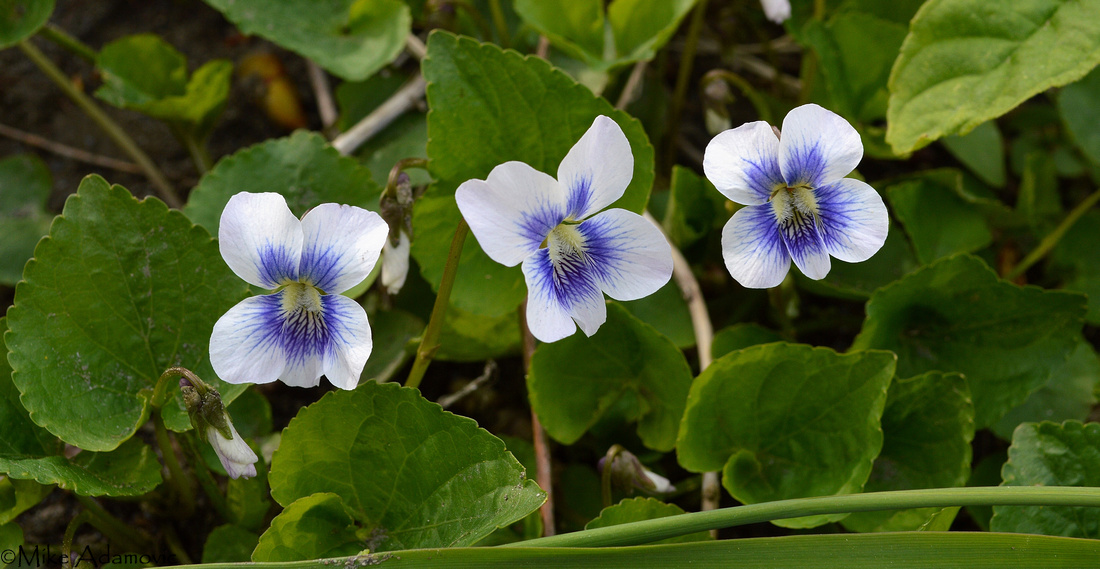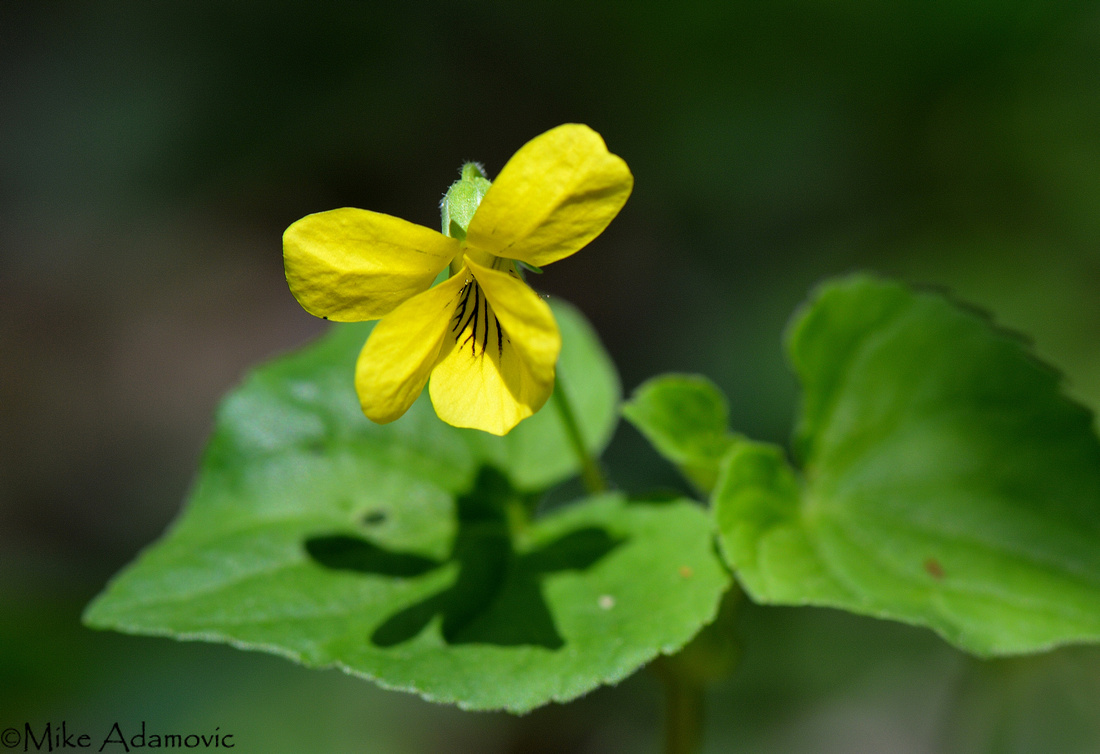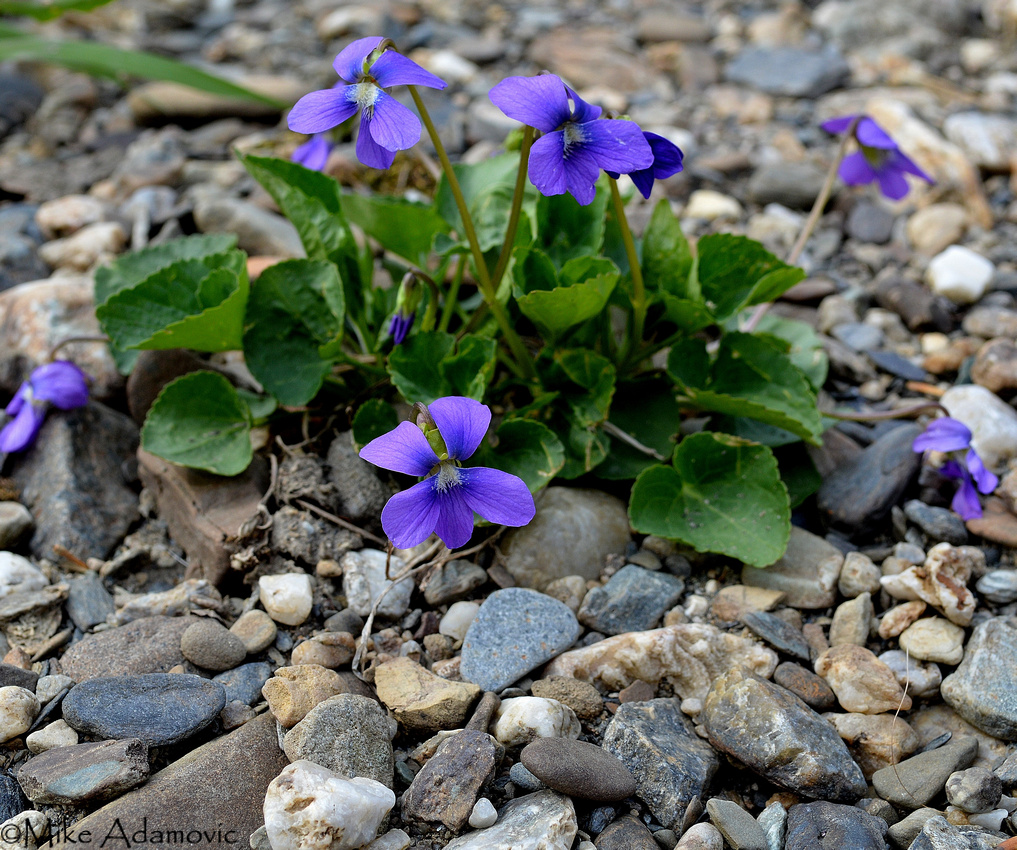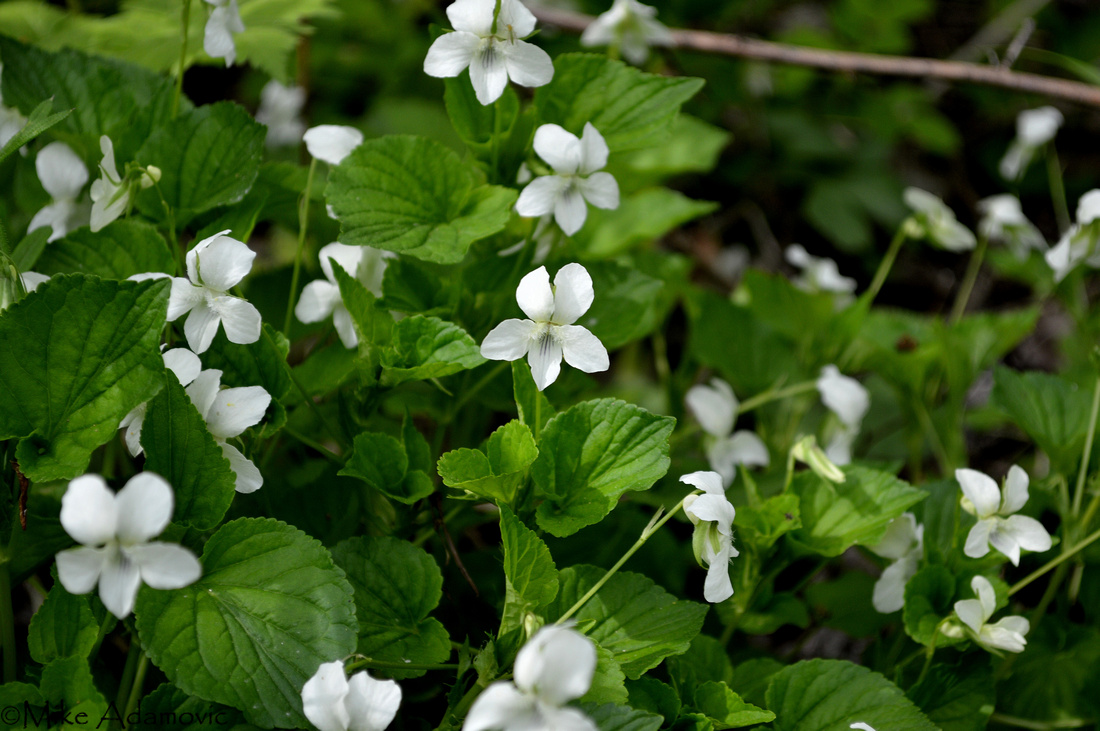Violets


As winter fades away and spring arrives, the ground is quickly populated with a lively tapestry of wildflower species that dazzle the eye with innumerable colors, shapes, and varying hues, all born and withered before the surrounding overarching trees fully expand their own buds and greedily snatch up the sunlight. Exploding from the ground in rapid succession, each floral expansion is a colorful burst on par with a miniature firework, a stroll through the understory providing a captivating show. Though often distracted by other showier and perhaps rarer flowers, the common, yet regal violets, are a fascinating genus to delve into, and shouldn’t automatically be dismissed solely due to their profusion.
While many violets share numerous similarities and are extremely difficult to differentiate from one another, it has been estimated that there are, in fact, between 500-600 species worldwide, approximately 85 of which can be found growing in North America. There’s tremendous variation among the community, with many varieties garnering oxymoronic names, such as round-leaved yellow violet and sweet white violet. While a majority do live up to their names in appearance, there’s more than a few that are anything but violet, being completely white, pink, and even the brightest shade of yellow, with numerous combinations and levels of mixing.


Yellow violets appear to be the most primitive, with their flowers being the first shift away from the ancestral green. Purple, in contrast, is thought to be one of the most advanced colors. Evolution in progress can be witnessed in the tall white violet (Viola canadensis), a native to Canada and the eastern U.S. Many botanists speculate that the mostly white flower, often dabbed with minor purplish tingeing on the back of the petals, is transitioning from entirely white to “violet.”
Violets fall into two general categories: those that are stemmed and have leaves and flowers protruding from them, and those that are stemless, having appendages emanating directly from the roots, with flowers being supported on a thin and usually low, leafless stalk. Breaking it down further, certain species, in addition to having showy blossoms, possess a trait known as cleistogamy, meaning they are capable of self-pollinating by means of tiny, barely noticeable flowers that resemble unopened buds. Once fertilization has occurred by means of insects or self-pollination, the seeds are ready for an explosive dispersal. After the seeds are fully developed, the pods they’re stored in slowly dry out, with the pod gradually tightening around the seeds, building up tension in the process, similarly to the action of a spring. Later, when the pods are disturbed, or sometimes just randomly, the pressure becomes too great and the seeds are shot out like miniature cannonballs. Amazingly, seeds are capable of flying up to 15 feet away from the parent plant.
Once on the ground, the seeds are further disbursed by ants. Attached to each tiny seed is a fleshy appendage called an elaiosome that’s rich in protein and lipids, but serves no direct impact to the seed’s survival. Like the sweet nectar of a flower, these elaiosomes are tempting treats to insects, and ants in particular, are readily enticed to collect them. Once dragged back to the colony, the energy-laden accessory is removed for consumption, and the hard seed body is dumped in waste pits where they may ultimately sprout. The dual dispersal techniques of the violets, such as those just described, that utilize both physiological mechanisms and biological organisms for seed movement, proves itself to be an extremely effective evolutionary strategy, ensuring rapid and prolific colonization of new locales.


Insects aren’t the only ones to appreciate the tasty nature of the violet. Nearly all parts of the plants are edible for human consumption. The leafy greens can be collected to create a salad that’s high in vitamins A and C, superseding that of an equal quantity of oranges. Beginning in the 19th Century, candied violets gained favor as a dessert garnishment and were widely served. Though their popularity has decreased over the years, in some circles they're still a favorite topping for sweet dishes of cake or ice cream. Traditionally, a syrup was also made by boiling the flowers in a concoction of sugar. Apart from sweetening the lips, the syrup is useful as a substitute for litmus paper. The solution turns red in the presence of an acid, green for a base.
To the Iroquois and other eastern Native Americans, the flower is revered as a symbol of love. An Iroquoian myth, one akin to the tragic Shakespearian play of Romeo and Juliet, tells of how two lovers of warring tribes were slain while trying to elope, and where each drop of blood hit the ground, a violet sprouted to commemorate their boundless passion.
While on the topic of romance, it’s also interesting to note that violets used to be the traditional flower of Valentine’s Day. Almost all bouquets bequeathed to loved ones sported purple rather than red. It wasn’t until the 1930’s that violets began to be supplanted by the thorny rose.
Violets were substantial money-makers during the early part of the 20th Century. Like other popular flowers today that are added to bouquets or home gardens, these plants began their lives in greenhouses where they were prodigiously cultivated in the millions. Rhinebeck, a quaint, pastoral town located near the shores of the Hudson River in southeastern New York cornered this unusual market. By shipping flowers down to New York City where there was an especially high demand, a sizeable profit was to be made, rivaling that of any better known cash-crop. Rhinebeck’s close proximity to New York City, and its easy access to the railroad that paralleled the Hudson, made it ideal for becoming the “Violet Capital of the World.” At its peak, hundreds of greenhouses were routinely cranking out thousands of violets per day in the spring—a fast worker could pick up to 5,000 during a single shift. Eleanor Roosevelt, who, with her presidential husband, occupied a spacious river-front estate in Hyde Park, a village just to the south of the violet hotbed, would often purchase copious amounts of various exotic cultivar varieties from nearby nurseries to line her gardens or decorate herself with. Frequently she was seen wearing intricate arrangements, making it a habit to do so at her husband’s numerous inaugurations.
Next time you’re outside in April, May, or early June it might be wise to keep your eyes open for the cosmopolitan violets, which really can be found growing just about anywhere—from open and sunny backyards to rich, sheltered woodlands and even in the dampest wetlands. Though small and unassuming, they nevertheless provide a cheerful reminder of the fecundity and diversity of the spring season. As Bern Williams succinctly sums it up: “We pass violets looking for roses. We pass contentment looking for victory.”

